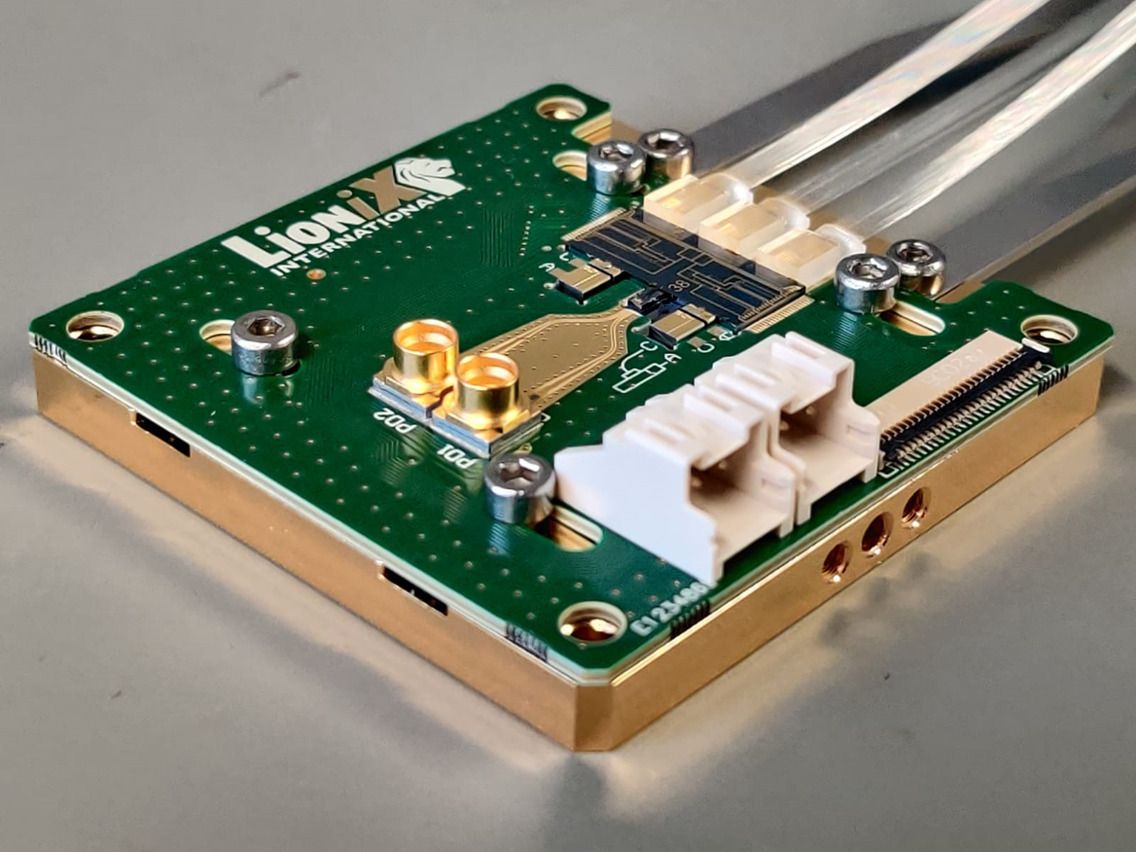Stable Mm-Wave Generation With Dual Hybrid Lasers
Low Loss Integrated Photonics Pave the Way for Terahertz Networks
One important application of photonic integrated circuits (PIC) is radio-frequency (RF) signal processing, and for a good reason. Photonic beamforming networks are a prime candidate technology for the implementation of THz data communication [1]. Wireless THz is likely to play a central role in the development of faster, higher bandwidth networks beyond the current 5G paradigm, which seem increasingly necessary as the number of devices connected to current networks continues to increase. Our silicon nitride (Si3N4) based platform can already achieve many functionalities, such as filtering and beamforming, for applications in tele/data communication, LiDAR, and others. We are continually adding new active-passive functions to TriPleX®. The latest of these is stable, flexible frequency conversion [2].
In collaboration with our consortium partners in Project TERAWAY, we have successfully demonstrated optical injection locking (OIL) in a hybrid InP-Si3N4 dual laser source. OIL is a technique in which the light of one laser is injected into another, locking the second with the first. By injecting the light from an optical frequency comb into our hybrid dual laser PIC, we allow it to act as a power-boosting comb demultiplexer filter. This approach minimized the amount of phase noise that alternatives introduce into such a system, and generated signals at a carrier frequency of 93 GHz while keeping signal stability within the International Telecommunication Union regulations.
Hybrid integrated module with two laser gain chips attached to the TriPleX® chip
Key to this success is the high Q factor of our hybrid InP-Si3N4 lasers. The Q factor affects the side mode suppression ratio of adjacent comb lines and the locking range of a comb demultiplexer filter, which are its two most important parameters. While earlier studies showed the potential of using two separate hybrid lasers for mm-wave heterodyne generation, limited frequency stability caused by thermal fluctuations made it practically unfeasible. In this case, both lasers were one the same chip, which synchronized their thermal fluctuations. This enhanced the comb locking range, allowing for improved continuous locking of the lasers with high side mode suppression. These results represent a definitive step towards frequency conversion into and out of the THz range, creating the infrastructure required for wireless 6G networks.
We are grateful for our partners in this project and look forward to many more groundbreaking results in 2023!

LioniX International’s marketing & communications director, Sadoon graduated with an MSc in Nanotechnology from the University of Twente. When not at an exhibition or meeting industry partners, he can be seen around the offices with a silly hat on.
References
[1] Y. J. Guo, M. Ansari, and N. J. G. Fonseca, ‘Circuit Type Multiple Beamforming Networks for Antenna Arrays in 5G and 6G Terrestrial and Non-Terrestrial Networks’, IEEE J. Microw., vol. 1, no. 3, pp. 704–722, Jul. 2021, doi: 10.1109/JMW.2021.3072873.
[2] L. Gonzalez-Guerrero et al., ‘Injection Locking Properties of an Dual Laser Source for mm-Wave Communications’, J. Light. Technol., vol. 40, no. 20, pp. 6685–6692, Oct. 2022.



